Cottage Loaves
July 7th, 2012
A few years ago, while I was researching the shape and size of mid-19th century bread loaves for a museum display, my grandmother sent me her own mother’s (my great-grandmother’s) bread pans.
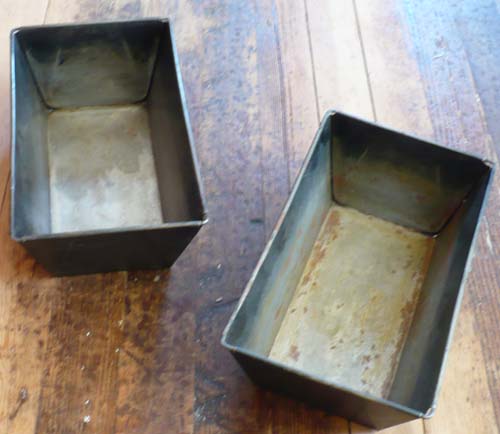
They’re tin, and liable to rust if not dried properly after washing. Notice how they are formed from sheets of metal folded over a rectangle of thick wire — you can really see it at the corners where the wire is uncovered. If my great-grandmother got them new, they’re about 100 years old. But of course, she may have inherited them herself!
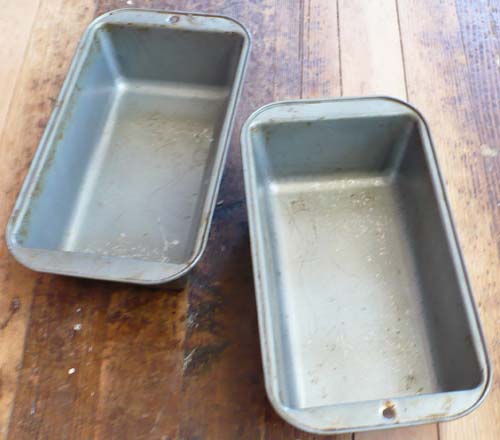
I prefer to bake in my own modern pans. They’re some sort of base metal covered in a smooth no-stick coating. Much easier to wash. And the museum professional in me feels better using “reproductions” and keeping the originals for display or study…
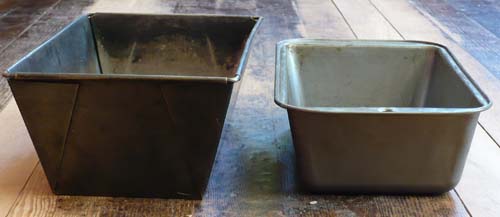
Notice the difference in pan size though! My modern pan (on the right) isn’t small by today’s standards. They weren’t kidding about their bread back then.
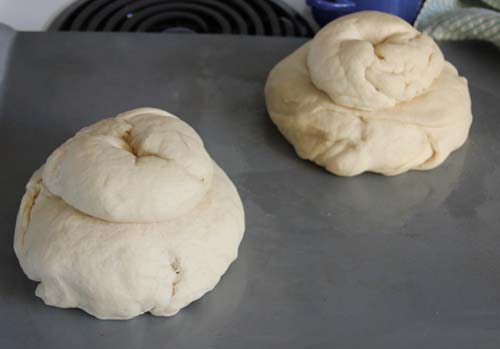
Of course, you don’t need pans at all to bake a beautiful loaf. In the middle of the 19th century, when baking implements were still prohibitively expensive or simply unavailable, many housewives made “cottage loaves.”
“…Divide it [the twice-risen bread dough] into two portions, one larger than the other, and make each into a smooth ball without cracks, placing the smaller on top of the other, and pressing the forefinger into the centre on the top…”
The St. James’s Cookery Book, Louisa Rochfort, 1894
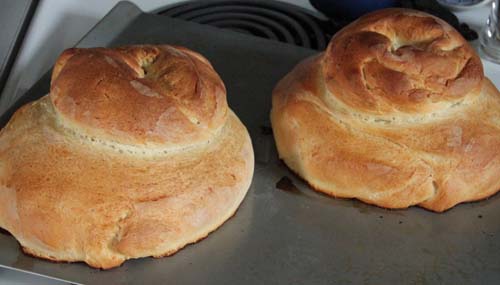
I made these loaves for Christmas brunch last year. I was staying at my mother’s house and didn’t have any bread pans…

Those look pretty and delicious!
We have an old (age indefinite, read on) bread pan that’s identical in construction to your antique ones, though I think the shape and size is different, because these are usually only used for sweet baking here in the Czech lands. Several years ago, I got two new pans for myself from mom, one was a modern non-sticky affair and the other was identical to our old one, both however similar in construction (wire frame). Which means you can still get these antique-style tin bread pans in the Czech Republic (which means our old one might not be that old).